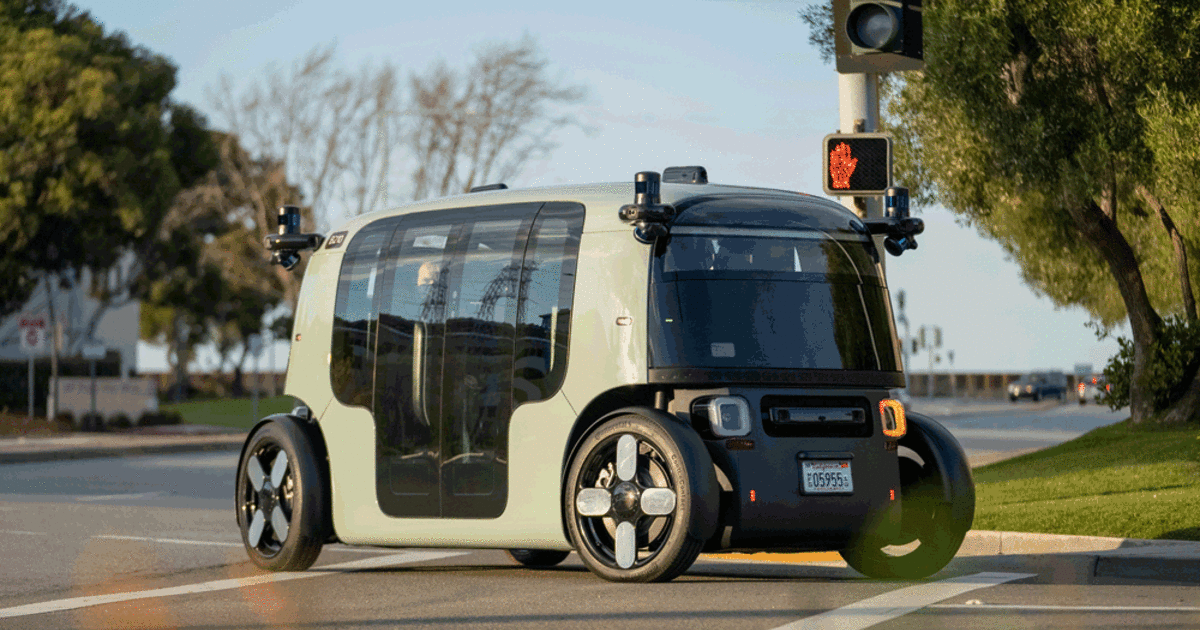
With Cruise and Waymo already operating extensive robotaxi fleets in San Francisco, it can be easy to forget there’s a third self-driving company with plans to launch in the city.
Amazon-owned Zoox took a “big step” toward that goal over the weekend, according to CEO Aicha Evans.
A Zoox robotaxi carried dozens of employees on multiple trips via public roads linking two of the company’s offices in Foster City, Calif., on Saturday. The vehicle reached speeds of 35 mph on its two-mile, round-trip route.
Last week, the California Department of Motor Vehicles granted Zoox a permit to deploy its purpose-built robotaxi on the public roads along the route. The specially designed robotaxi does not contain traditional controls like a steering wheel or brake pedal. It’s not meant for human drivers.
Evans hailed the moment as a major milestone for the company, founded in 2014.
“Putting the vehicle on an open public road, and validating our approach to all the different requirements, including regulatory, is a big step,” she said. “We would not have done it unless internally we were already looking at the line of sight for going commercial.”
Exactly when that commercial service will begin remains a question. Both Evans and Zoox chief technology officer and co-founder Jesse Levinson declined to share internal timelines Monday.
Further permits from California’s DMV and Public Utilities Commission would be required to carry non-Zoox employees in commercial service on public roads.
Zoox already conducts testing with a fleet of conventional vehicles in San Francisco and Las Vegas.
The company’s robotaxis would need a permit to drive in Nevada similar to the one just granted in California.
Levinson said Monday he expected such a development “in the not-too-distant future.”
While Zoox obtained the necessary permit in California and pursues one in Nevada, it remains unclear how its vehicle, without traditional driving controls, conforms to existing Federal Motor Vehicle Safety Standards. The company said it had not received a waiver or exemption.
“There are no restrictions,” Evans said. “I want to be very clear. No exemptions. No waivers. Nothing.”
She said Zoox had been in contact with the National Highway Traffic Safety Administration before Saturday’s deployment. Officials from NHTSA did not immediately return a request for comment on whether the Zoox vehicle met regulatory requirements. California’s DMV did not return a request for comment.
Zoox has now manufactured “dozens” of its electric vehicles, according to Levinson. Zoox anticipates that California officails will approve more for use in the weeks ahead, he said Monday.
Although owned by Amazon, the executives reiterated Monday they have no plans to consider carrying goods and packages instead of human passengers with their autonomous vehicles.
Zoox trumpeted Saturday’s service as an industry first, saying it marked “the first time in history a purpose-built autonomous robotaxi without traditional driving controls carried passengers on open public roads.”
But other purpose-built autonomous shuttles have also carried people on public roads. For example, Google carried employees in its prototype Firefly vehicle on public roads in Mountain View, Calif., and later carried Steve Mahan, a blind passenger, on public roads in Austin, Texas, in October 2015.